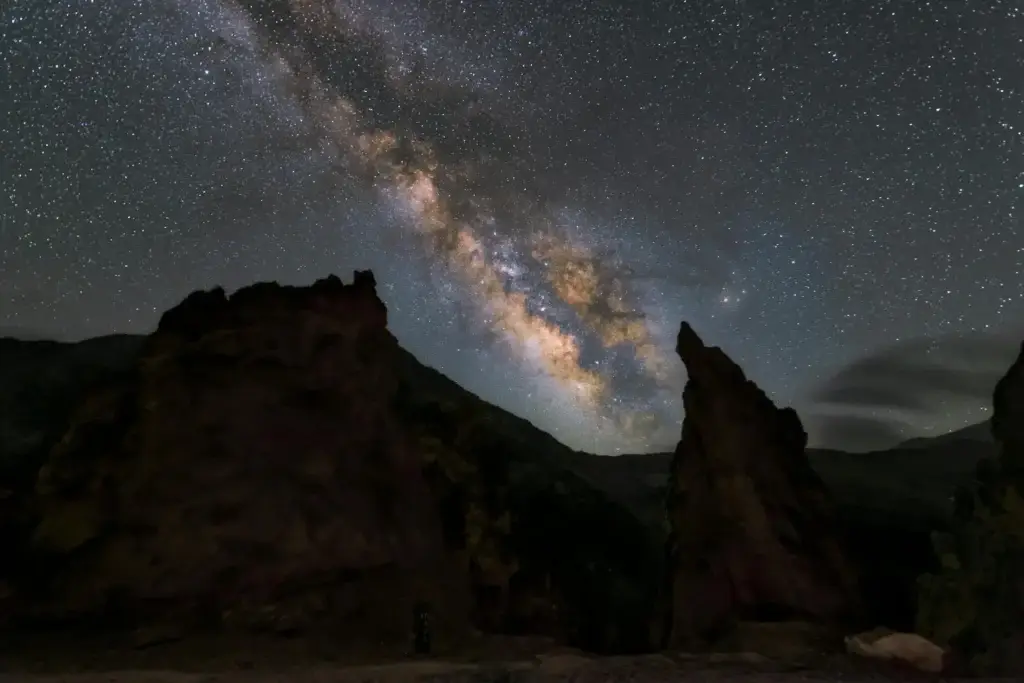Disclosure: This post may contain affiliate links, meaning we get a commission if you decide to make a purchase through our links,
at no extra cost to you. #ad
Hey there, fellow adventurer!
Ready for an outdoor activity that’s truly out of this world? Forget your usual camping trip; we’re talking about an experience that will leave you absolutely speechless: dark sky camping. Imagine settling down for the night, not just under some stars, but under a truly dazzling canvas of billions of them, so bright you feel like you could almost touch them. It’s a complete escape from the light pollution of our cities and towns, offering a view of the cosmos you rarely get to see. If you’re looking for unique and fun things to do outside, this is it!
I’ll never forget the first time I really experienced a truly dark sky. It was on a camping trip along the Buffalo River in North Central Arkansas, in the Ozark Mountains. I’d always seen stars, of course, but nothing prepared me for that night. We laid out our blankets, and as my eyes adjusted, the sky just opened up. The Milky Way wasn’t a faint smudge; it was a vibrant, swirling river of light. I saw so many shooting stars I lost count, and it felt like the universe was putting on a private show just for us. That’s the kind of magic I want you to experience.
What Exactly is a Dark Sky Designated Area?
So, what makes a “dark sky” area special? Basically, it’s a place that has made a conscious effort to preserve its natural nighttime environment by minimizing artificial light pollution. These areas are officially recognized by organizations like the International Dark-Sky Association (IDA), which works to protect our night skies.
Think of it like this: just as we have national parks to protect our forests and mountains, we have dark sky designated areas to protect the darkness of the night. This means communities, parks, and preserves in these locations implement smart lighting practices (like using shielded, downward-facing lights) to keep light from scattering into the atmosphere and obscuring the stars. The result? Unbelievably clear, pristine views of the Milky Way, constellations, shooting stars, and even distant galaxies. It’s truly a bucket-list camping experience!
Where to Find Your Perfect Dark Sky Spot
Finding these celestial havens is easier than you might think, thanks to the efforts of the IDA.
- International Dark-Sky Association (IDA) Website: This is your absolute go-to resource. The IDA has a comprehensive list and interactive map of all certified Dark Sky Parks, Communities, Sanctuaries, and Reserves around the globe. Each listing provides details about the location, what to expect, and often links to their official websites for more specific camping information. You’ll find designations ranging from vast national parks to smaller, dedicated preserves.
- National and State Parks: Many national and state parks, particularly in the western U.S. or other remote areas, are either already designated dark sky areas or have incredibly dark skies even without formal certification. Always check their specific websites for camping availability and any night sky programs they might offer.
- Local Astronomy Clubs: These passionate groups often know the best local spots for stargazing and might even host public viewing events. It’s a great way to discover hidden gems close to home.
When you’re planning your trip, always confirm the specific camping rules for your chosen dark sky designated area. Some might require reservations, while others are first-come, first-served.
Preparing for Your Dazzling Dark Sky Camping Trip
Getting ready for dark sky camping isn’t much different from your regular camping preparations, but with a few key additions to maximize your stargazing experience:
- Red Light Headlamps/Flashlights: This is crucial! White light ruins your night vision, taking up to 30 minutes for your eyes to fully adjust to the dark again. Red light preserves your night vision, so you can move around safely without missing out on the stars.
- Warm Layers: Even on warm days, nights in remote areas can get surprisingly chilly, especially when you’re sitting still and looking up. Pack extra blankets, hats, and gloves.
- Binoculars or a Telescope (Optional but Amazing!): While you’ll see an incredible amount with just your naked eyes, a good pair of binoculars can reveal countless more stars, and a telescope opens up a whole new universe of nebulae and galaxies.
- Comfortable Seating: A reclining chair or a nice comfy waterproof picnic blanket is perfect for lying back and scanning the heavens without straining your neck.
- Star Charts or Apps: Download a stargazing app (like SkyView Lite or Star Walk) or bring a physical star chart to help you identify constellations and planets. It adds a whole new layer to the experience.
- Insulated Mug: Fill a large insulated mug with hot chocolate or tea to keep warm and cozy while you’re enjoying the celestial show.
So, if you’re craving an outdoor activity that truly takes your breath away, ditch the city lights and plan a dark sky camping adventure. It’s more than just a night out; it’s a chance to reconnect with the vastness of the universe and create memories that will twinkle long after you’ve returned home. Have you been to a Dark Sky Park? Tell me about your awesome experience comments below. If you haven’t gone yet, what are you waiting for? The stars are calling!
